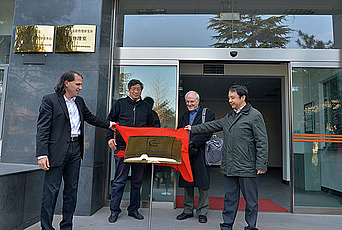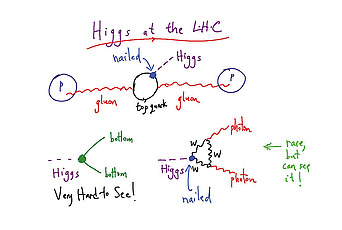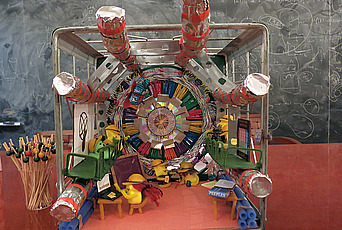What’s Next?
In recent decades, physicists and astronomers have discovered two beautiful Standard Models, one for the quantum world of extremely short distances, and one for the universe as a whole. Both models have had spectacular success, but there are also strong arguments for new physics beyond these models. In this lecture, Nathan Seiberg, Professor in the School of Natural Sciences, reviews these models, their successes, and their shortfalls. Also, he describes how experiments in the near future could point to new physics suggesting a profound conceptual revolution that will change our view of the world. Excerpts drawn from Seiberg's public lecture appear below.
I do not know what the future will bring. I guess nobody knows; and we do not know what will be discovered, either experimentally or theoretically, and that’s actually one of the reasons we perform experiments. If we knew for sure what the outcomes of the experiment would be, there would be no reason to perform the experiment. This is also the reason scientific research is exciting. It’s exciting because we’re constantly surprised either because an experiment has an unexpected outcome or theoretically someone comes up with a new insight. . . .
We are in an unusual and unprecedented situation in physics. We have two Standard Models. The Standard Model of particle physics describes the shortest distances and the Standard Model of cosmology describes the longest distances in the universe. These models work extremely well over the range of distances for which they were designed to work. However, there are excellent arguments that this story is not complete, and there must be new physics beyond these models. . . .
We have something that works almost perfectly, there are only a few details that don’t work and these details really should be interpreted as the first sign of the next revolution. . . . One should focus on these little discrepancies, these little things that are not fully understood, because these are the things that will guide us. . . .
Often research progresses in steps. We collect data. We find a pattern, explaining a lot of data using fewer numbers (parameters). And then we ask why is the pattern right? What is the underlying principle that controls this pattern? Once we find the underlying principle behind the pattern, we try to understand the remaining parameters and then we go back to the beginning. . . . Sometimes we try to explain a number that is not fundamental, and the art is to figure out what is it that we need to explain. . . .
In many cases, we understand the laws only in principle. What most physicists do is try to understand the consequences of the laws we understand. All of chemistry follows from these laws. All of biology follows from these laws, and there is a lot of interesting and exciting science trying to work out the consequences of these laws. But, at least in principle, we know what the fundamental laws are. . . .
The model of particle physics uses two of the revolutions of the twentieth century: quantum mechanics and special relativity. The cosmology model uses the third revolution of twentieth-century physics: general relativity. We need to combine the principles of one model with the principles of the other model. In other words, we need to combine quantum mechanics and general relativity. . .
We would like to explain all of the parameters in these two models. Some of these parameters are unstable. If we make small changes at short distances, they make a huge difference at long distances. An ongoing experiment, the Large Hadron Collider (LHC), is going to give us input into this question. If there is a stabilizing mechanism for this instability, it will be discovered at the LHC. . . .
The experiments will find a new stabilizing mechanism or, alternatively, that there is no stabilizing mechanism. If there is no stabilizing mechanism, we may have to go to a multiverse arena where there are lots of universes and we are just in one random universe, where these parameters are environmental; and we will have to start learning how to think about physics in such a setup. Clearly these are very interesting issues. I asked at the beginning of the talk, “What is next?” The answer is we do not know, but it’s guaranteed to be exciting.


